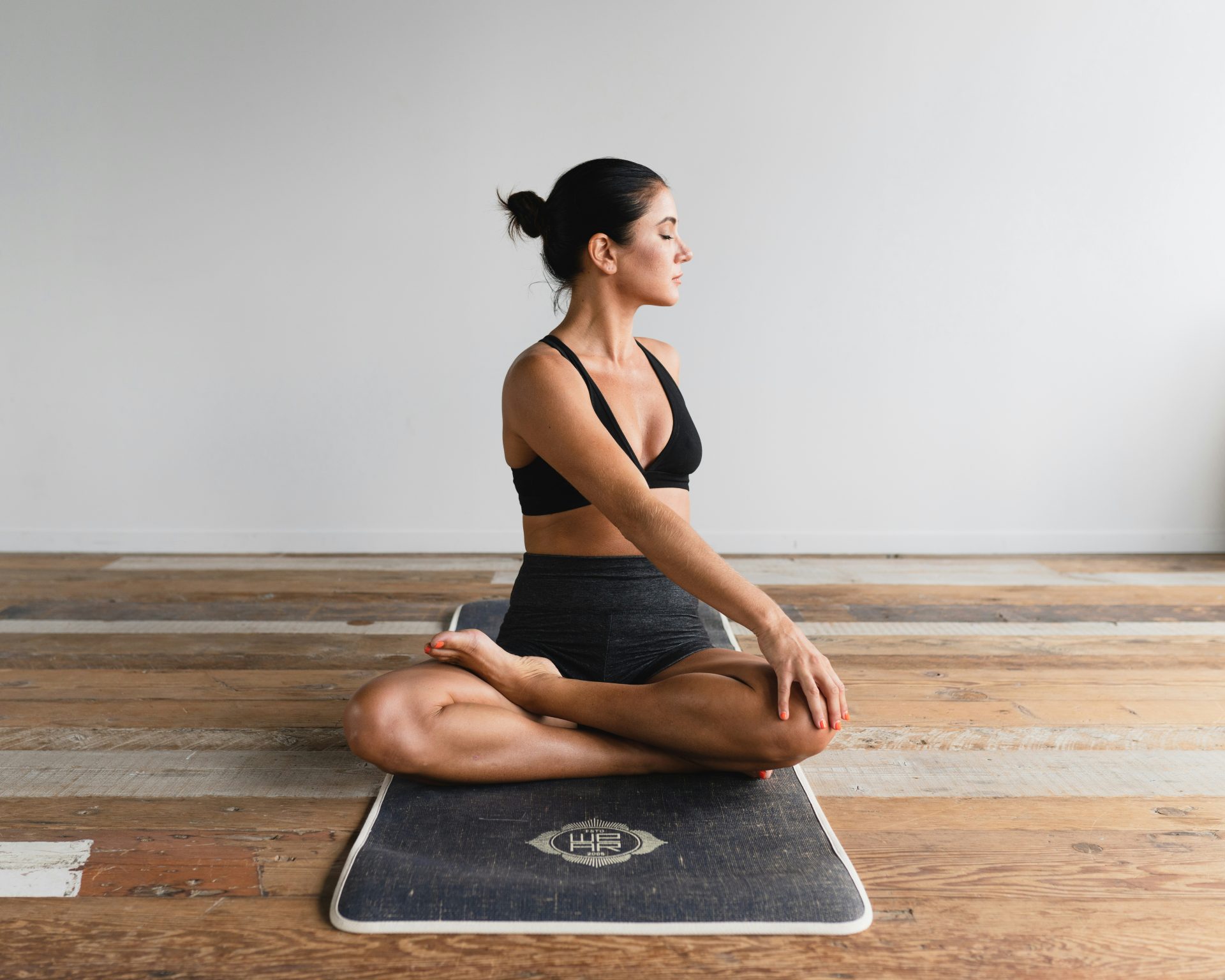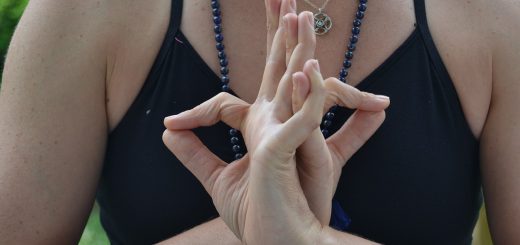Exploring the Spiritual Side of Yoga Practice

Before diving in, please note: This post is for informational purposes only. If you’d like to know more about how we approach topics, feel free to check out our friendly Disclaimer Page.
Hey there, amazing readers! 🖐️ Just a quick note: yes, we know there are a lot of ads here. Trust us, we get it—it’s not the prettiest look, but they help us keep this blog alive and kicking. Those pesky little ads cover the costs of all the behind-the-scenes magic, from hosting and tech stuff to creating content we hope you’ll love.
We’re committed to delivering quality posts, and your support (even just sticking around despite the ads) means everything to us. So, bear with us, and thanks for helping us keep the good vibes rolling. Now, on to the fun stuff! 😉
TRANSLATE BUTTON AT THE END OF THE ARTICLE
A Quick Overview
Yoga is often seen as a physical exercise, a series of poses designed to stretch and strengthen the body.
However, there’s so much more to it.
As someone who has practiced yoga for quite some time, I can attest that at its core, yoga is a spiritual journey that transcends mere physicality.
In this article, we will explore the spiritual dimensions of yoga, including mindfulness, breathwork, meditation, and the underlying philosophies that can enrich our lives.
So, roll out your mat, and let’s dive deep!
Understanding the Essence of Yoga Beyond Physical Poses
When I first started doing yoga, I was all about those Instagram-worthy poses.
Downward dog?
Check.
Warrior II?
Double check.
But as I continued, I realized that yoga is so much more than bending and stretching.
It’s a holistic practice that engages the body, mind, and spirit.
Yoga’s history is rich and entwined with spirituality.
It originated from ancient Indian philosophies aimed at uniting the individual self with the universal consciousness.
Every pose, or asana, has its purpose beyond physical fitness.
It acts as a bridge to connect us with deeper truths about ourselves and the world around us.
The physical aspect of yoga certainly holds importance.
However, I’ve discovered that when I embrace the spiritual side, my practice becomes a source of profound insight and personal growth.
I often find myself reflecting on my values, beliefs, and the nature of my existence while in a gentle child’s pose or a grounding mountain pose.
Moreover, understanding that yoga is a practice of self-discovery has shifted the way I perceive challenges.
Each time I struggle in a pose, I remind myself that it mirrors the struggles I face in life.
It’s all about balance—both on and off the mat.
So, the next time you roll out your mat, try to focus on the feelings and connections you experience rather than just mastering the poses.
Let the spiritual essence of yoga wash over you, and you might find a transformative experience waiting to unfold.
The Connection Between Mindfulness and Spiritual Growth
In our fast-paced lives, mindfulness can seem like a rare commodity.
However, yoga offers a brilliant avenue to cultivate it.
Mindfulness in yoga is about being present, feeling each breath, and connecting with our body as we move through the poses.
When I practice mindfulness during yoga, I often find that my mind quiets down.
Instead of worrying about tomorrow’s tasks or yesterday’s regrets, I can focus solely on the moment.
This presence fosters spiritual growth.
The more I connect with myself, the more I understand my desires, fears, and motivations.
One of my favorite techniques is the “body scan.” This involves mentally checking in with each part of my body as I move through poses.
It’s like giving my body a loving pat on the back.
I acknowledge what feels good and what needs attention.
This practice helps develop a compassionate relationship with myself, which is crucial for spiritual growth.
Mindfulness stretches beyond the mat, too.
I’ve started applying it in daily activities, like eating or walking.
It’s liberating!
I savor every bite and notice the world around me.
This practice fosters gratitude—another essential aspect of spirituality.
By being mindful, I’m not just going through the motions; I’m experiencing life fully.
And that, my friends, is where the magic happens.
How Breathwork Enhances Your Yoga Experience
Breath is life.
It’s astonishing how something so fundamental can often be overlooked.
In yoga, breathwork, or pranayama, serves as a powerful tool for both physical and spiritual enhancement.
I remember my first class focusing solely on breath control.
At first, it felt awkward.
But as I delved deeper, I realized that my breath was my anchor.
It helped me to center myself and transition smoothly through poses.
Breath is not just about inhaling and exhaling; it’s a bridge between body and spirit.
By controlling my breath, I can influence my emotions and mental state.
For instance, deep and slow breathing calms me, while quick and shallow breaths boost my energy.
Incorporating breathwork into my practice has taught me to tap into my inner peace.
When I feel overwhelmed in daily life, I take a moment to breathe deeply.
Suddenly, everything seems a bit more manageable.
Breath also amplifies the effects of meditation.
It helps in quieting the mind and enhancing focus.
When I’m mindful of my breath, I can dive deeper into meditation, exploring layers of thought and emotion I didn’t know existed.
So, next time you practice, pay attention to your breath.
Let it guide you—like a trusty compass on your yoga journey.
The Role of Meditation in Deepening Your Practice
Meditation might seem intimidating at first—a quiet room, closed eyes, and an effort to silence the mind.
But trust me, it’s a beautiful addition to any yoga practice.
I began incorporating meditation after my asanas, thinking it would add a layer of tranquility to my routine.
What I didn’t expect was how profoundly it would deepen my understanding of myself.
Meditation allows me to observe my thoughts, feelings, and patterns without judgment.
During meditation, I often visualize my breathing as a wave washing over me.
It calms my racing thoughts and helps me connect with my inner self.
This connection is where I find spiritual insights.
I’ve had moments of clarity that have guided my decisions and helped me navigate life’s challenges.
Meditation also fosters compassion and empathy.
When I take the time to understand my inner workings, I find it easier to extend that understanding to others.
If you’re new to meditation, start small.
Even five minutes can make a difference.
Gradually increase your time as you feel more comfortable.
Remember, there’s no right or wrong way to meditate.
It’s about discovering what resonates with you.
So, embrace meditation as part of your yoga journey.
It’s not just a practice; it’s a path to self-discovery and deeper spiritual connection.
Exploring Chakras: Energy Centers in Yoga Philosophy
The concept of chakras may sound a bit mystical, but they’re simply energy centers within us.
Understanding these centers can add a fascinating layer to your yoga practice.
There are seven main chakras, each associated with different physical and emotional aspects of our being.
They are like the body’s energy highways.
When they’re balanced, we feel vibrant and connected.
When they’re blocked, we may experience emotional or physical discomfort.
I remember being skeptical about chakras until I decided to learn more.
Each chakra resonates with specific colors, sounds, and meanings.
When I explored this, I began to notice how certain poses activated specific energy centers.
For example, a heart-opening pose like camel can awaken the heart chakra, fostering love and compassion.
Incorporating chakra awareness in my practice has helped me identify areas in my life needing attention.
If I notice tension in my throat, it might indicate I’m not expressing myself fully.
Recognizing these patterns helps me understand my emotional landscape and brings awareness to my spiritual journey.
Whether you choose to use crystals, essential oils, or simply mindfulness, exploring chakras can deepen your connection to both your practice and yourself.
The Importance of Intention Setting in Yoga Sessions
Before I step on my mat, I take a moment to set an intention.
It’s like planting a seed for my practice.
This simple act has transformed the way I approach yoga, adding purpose and clarity.
Setting an intention can be as simple as a word or a phrase.
Maybe I want to cultivate patience or embrace joy.
This small act helps me focus my energy and guides my practice.
When I’m in a challenging pose, I often come back to my intention.
It serves as a reminder to stay grounded and present.
I’ve found that when I set intentions, my practice feels more meaningful.
I’m not just going through the motions—I’m engaging with my body and spirit.
This practice of intention setting isn’t just confined to the mat.
I’ve started applying it to my daily life.
Setting intentions for my day helps me stay aligned with my values and goals.
So, before your next class, take a moment to reflect.
What do you want to cultivate in your practice today?
Setting that intention can make all the difference.
Embracing the Concept of Ahimsa: Non-Violence in Life
Ahimsa, or non-violence, is one of the core principles in yoga philosophy.
It’s about more than just refraining from physical harm; it’s about nurturing compassion towards ourselves and others.
I’ll be honest; embracing ahimsa has been a journey for me.
At first, it felt daunting.
How do I cultivate non-violence in a world filled with chaos?
But I learned that it starts with self-love.
Practicing ahimsa means being gentle with myself during my yoga practice.
If I can’t achieve a pose, I remind myself that it’s okay.
It’s about progress, not perfection.
This compassion spills over into my interactions with others, too.
I’ve become more patient and understanding, recognizing that everyone is on their own journey.
Ahimsa also extends to our thoughts.
I’ve started to notice negative self-talk and replace it with kinder, more supportive language.
This shift has been liberating and has fostered a deeper sense of peace.
When we embrace ahimsa, we create a ripple effect.
Our actions, words, and thoughts influence those around us.
By embodying non-violence, we contribute positively to our environment and relationships.
So, as we practice yoga, let’s carry the spirit of ahimsa with us.
Let it guide our thoughts and actions, fostering a kinder, more compassionate world.
Rituals and Symbols: Adding Spiritual Depth to Yoga
Rituals and symbols have been part of spiritual practices for centuries, and they can add beautiful layers to our yoga journey.
From lighting a candle before class to using specific mantras, these acts can help set the mood and create a sacred space.
One personal ritual I cherish is creating a small altar at home.
It holds meaningful items—photos of loved ones, crystals, or inspirational quotes.
Before I practice, I take a moment to sit in front of it, reflecting on my intentions.
This simple act helps me connect with my spiritual side.
Symbols hold power.
The lotus flower, for example, represents purity and enlightenment.
When I see it, I’m reminded of the beauty that can emerge from the murky depths of life.
Incorporating such symbols in our practice can inspire us and serve as constant reminders of our spiritual goals.
Music can also elevate our practice.
Soft chanting or instrumental sounds create an ambiance that helps me connect with my emotions and spirit.
I encourage you to experiment with different elements and see what resonates with you.
Ultimately, rituals and symbols are about creating meaning.
They ground us in our practice and remind us of the spiritual journey we are on.
So, don’t hesitate to personalize your practice.
Make it your own, and allow it to nurture your spirit.
Finding Your Inner Guru: Trusting Your Intuition
In a world full of noise, it’s easy to seek external validation.
However, yoga teaches us that the answers often lie within.
Finding your inner guru means trusting your instincts and intuition.
I’ve learned that my body knows what it needs.
Sometimes I’m drawn to a gentle flow, while other days, I crave something more intense.
Listening to these whispers has transformed my yoga practice.
It’s no longer about following a set routine; it’s about honoring what feels right for me.
This connection with my intuition extends beyond the mat.
When faced with decisions in life, I try to tune in to my gut feelings.
They often guide me toward choices that align with my true self.
Yoga is a practice of self-discovery.
The more we connect with ourselves, the clearer our inner voice becomes.
So, whether it’s during a pose or in daily life, trust yourself.
You are your own best guide.
The Power of Community: Yoga as a Shared Journey
Yoga can be a deeply personal practice, but it also has incredible communal aspects.
Sharing our journeys with others fosters connection, support, and growth.
I’ve attended countless classes, and each time, there’s a unique energy present when a group comes together.
We encourage one another, share smiles, and often find ourselves laughing through our struggles.
It’s a beautiful reminder that we’re not alone.
Joining a yoga community has brought so much joy into my life.
From workshops to retreats, I’ve met amazing individuals who have enriched my understanding of yoga.
These connections often lead to deep conversations about our shared experiences.
The power of community lies in its ability to uplift us.
When one person shines, it inspires others.
We celebrate each other’s successes and offer support during challenges.
So, don’t hesitate to engage with your yoga community.
Attend classes, workshops, or even online groups.
Sharing this journey can create lifelong friendships and deepen your understanding of yoga.
Integrating Spiritual Principles into Daily Life
Yoga isn’t just something we do on the mat; it’s a philosophy that can permeate our daily lives.
Integrating spiritual principles can lead to a more fulfilling existence.
For instance, practicing gratitude has been transformative for me.
Each morning, I take a moment to reflect on what I’m thankful for.
This simple practice shifts my mindset and cultivates positivity throughout the day.
I also try to embody compassion in my interactions.
Whether it’s smiling at a stranger or lending a listening ear to a friend, these small acts create a ripple effect of kindness.
Mindfulness is another principle I’ve woven into my life.
I find joy in everyday tasks—whether it’s savoring my morning coffee or enjoying a walk in nature.
Being present adds richness to these moments.
Furthermore, I’ve learned to approach challenges with curiosity rather than resistance.
Instead of viewing obstacles as burdens, I try to see them as opportunities for growth.
This shift in perspective has made a world of difference.
By integrating these principles, we create a lifestyle that honors our spiritual journey.
It’s not just about yoga; it’s about living in alignment with our values and aspirations.
Cultivating Gratitude: A Key Element of Yoga Practice
Gratitude is like a warm hug for the soul.
It’s a powerful tool that can transform our perception of the world around us.
In my yoga practice, I’ve seen how gratitude can enhance my experience.
I often take a moment during savasana, the final resting pose, to reflect on what I’m thankful for.
It might be the strength of my body, the beauty of the surroundings, or the kindness of a friend.
This practice fills my heart with warmth and joy.
Gratitude shifts our focus from what we lack to what we have.
When I actively cultivate it, I find myself more present and engaged.
It’s like putting on a pair of rose-colored glasses that allow me to see the beauty in everyday life.
Incorporating gratitude into my routine has also fostered resilience.
Life can be tough, but remembering what I’m grateful for helps me navigate challenges with grace.
So, let’s embrace gratitude in our practice.
Whether through journaling, meditation, or simply pausing to reflect, nurturing this feeling can create a profound impact on our lives.
Conclusion
Yoga is a beautiful tapestry woven with physical, mental, and spiritual threads.
As we explore its deeper dimensions, we invite transformation into our lives.
From understanding the essence of yoga beyond physical poses to embracing gratitude, each aspect offers a pathway to self-discovery and growth.
So, whether you’re a seasoned yogi or just starting your journey, remember to approach your practice with an open heart and mind.
Allow the spiritual side of yoga to enrich your life, guiding you toward greater awareness, connection, and joy.
Let’s continue to explore, grow, and share this incredible journey together!

The Enlightenment Journey is a remarkable collection of writings authored by a distinguished group of experts in the fields of spirituality, new age, and esoteric knowledge.
This anthology features a diverse assembly of well-experienced authors who bring their profound insights and credible perspectives to the forefront.
Each contributor possesses a wealth of knowledge and wisdom, making them authorities in their respective domains.
Together, they offer readers a transformative journey into the realms of spiritual growth, self-discovery, and esoteric enlightenment.
The Enlightenment Journey is a testament to the collective expertise of these luminaries, providing readers with a rich tapestry of ideas and information to illuminate their spiritual path.
Our Diverse Expertise 🌟
While our primary focus is on spirituality and esotericism, we are equally passionate about exploring a wide range of other topics and niches 🌍📚. Our experienced team is dedicated to delivering high-quality, informative content across various subjects ✨.
To ensure we provide the most accurate and valuable insights, we collaborate with trusted experts in their respective domains 🧑🏫👩🏫. This allows us to offer well-rounded perspectives and knowledge to our readers.
Our blog originally focused on spirituality and metaphysics, but we’ve since expanded to cover a wide range of niches. Don’t worry—we continue to publish a lot of articles on spirituality! Frequently visit our blog to explore our diverse content and stay tuned for more insightful reads.






